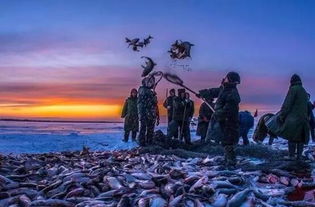
Content:
Winter is a season that often discourages anglers from venturing out to their favorite fishing spots. However, the cold weather can be a perfect time to catch some of the most delicious fish from wild ponds. With the right techniques and a bit of patience, you can enjoy a successful fishing trip even during the coldest months. In this article, we will discuss the essential winter fishing techniques and tips to help you master the art of catching fish at wild ponds.
Choose the Right Location
Finding the right spot is crucial for a successful winter fishing trip. Look for a pond that is well-insulated from cold winds and has a good fish population. Avoid shallow waters, as they tend to freeze earlier and may not be as productive. Look for deeper areas where fish are more likely to stay during the winter months.
Understand the Behavior of Fish in Winter
During the winter, fish are less active and tend to move to deeper waters to escape the cold. They are also more selective about their food sources. To attract them, you need to understand their behavior and adjust your tactics accordingly.
Use the Right Equipment
Winter fishing requires specific equipment to ensure your comfort and success. Here are some essential items to consider:
- A sturdy, well-insulated rod and reel: Choose a rod that can handle the weight of the fish you're targeting and a reel that can handle the line and tackle you'll be using.
- A durable, insulated rod holder: This will keep your rod stable and prevent it from freezing.
- A warm, waterproof jacket and pants: Dress in layers to stay warm and dry.
- Insulated gloves and boots: Keep your hands and feet warm and protected from the cold.
- A heated fishing vest or blanket: These can provide additional warmth and comfort during long fishing sessions.
Use the Right Baits and Lures
In winter, fish are less likely to move far to chase after food. Therefore, you need to use baits and lures that mimic natural food sources and can be detected easily in the colder water. Here are some effective options:
- Live bait: Minnows, nightcrawlers, and leeches are popular choices during the winter months.
- Artificial lures: Jigs, spinners, and spoons that resemble small fish or insects can be effective.
- Soft plastics: Small worms, grubs, and crayfish imitations can work well in winter conditions.
Adjust Your Technique
Winter fishing requires a different approach compared to fishing during warmer months. Here are some tips to help you adapt:
- Fish slower: Fish are less active in winter, so you need to fish slower and give them more time to respond to your bait.
- Use lighter tackle: Lighter tackle allows you to present your bait more naturally and reduces the chances of spooking fish.
- Change your retrieve technique: Instead of a fast retrieve, try a slower, more erratic motion to mimic the natural movement of prey.
- Pay attention to the weather: Winter weather can change rapidly, so keep an eye on the forecast and be prepared to move to a different location if necessary.
Be Patient and Persistent
Winter fishing can be challenging, but with patience and persistence, you can catch some impressive fish. Remember that it may take longer to get a bite, so be prepared for a longer fishing session. Stay focused and keep experimenting with different techniques until you find what works best for the conditions.
In conclusion, winter fishing at wild ponds can be a rewarding experience if you know how to adapt to the cold weather and understand the behavior of fish during this time. By choosing the right location, equipment, baits, and techniques, you can increase your chances of success and enjoy a memorable fishing trip. So, bundle up, head to your favorite pond, and put these winter fishing tips into practice. Happy fishing!












